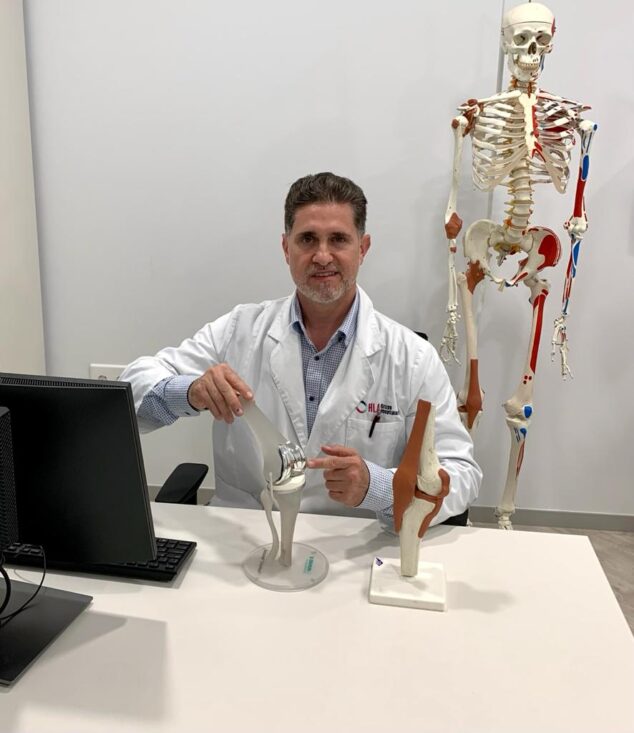Prosthetic or orthopedic surgery in trauma refers to substituting or replacing a damaged joint due to wear (osteoarthritis) with an artificial joint made of metal and other materials that will perform the function of the joint. This new artificial knee is designed to imitate all the characteristics of the natural knee, so it will allow the same previous movement, it will stabilize the joint just like the ligaments did, and it will be able to transmit body weight. in activities of daily living.
The main difference with the native knee is that it lacks sensitivity, therefore, the pain derived from joint wear disappears. So much so, that knee and hip prosthetic surgery are one of the greatest advances in modern medicine. Since we live longer and longer, the improvement in the duration and results of joint prostheses allow many patients to lead an active and independent life, despite having suffered osteoarthritis that has destroyed his knee.
At Lóleo Eventos, Dr. Ballester Clinic They will not only offer you their dental implantology and aesthetic dentistry services, since they are also specialists in Orthopedic Surgery and Traumatology. In addition to being experts in knee replacements, they are also experts in hip and shoulder prosthesis, so they will help you in everything related to these aspects.
When did we decide to put a knee prosthesis?
The prosthesis is the last resort to treat knee cartilage damage. If we compare the locomotor system with a machine made up of parts that we take care of, lubricate and repair, the prosthesis would be like changing a worn part for a new one, when that part can no longer be repaired. In the case of the knee, the main cause that damages them irreversibly and leads them to need a prosthesis is knee osteoarthritis. This disease affects 1 in 5 people in Spain, becoming more frequent as we age. If we add to this that we are living longer, it is foreseeable that despite improvements in treatment and lifestyle, osteoarthritis will increase in the coming decades.
The joints most frequently affected by osteoarthritis are the knees and hips, being the most frequently implanted prostheses. What can be expected with the increase in life expectancy is that this figure will increase even more in the coming decades.
Surgeries are performed at the Hospital HLA San Carlos, your reference hospital center in Dénia.
How long does a knee replacement last?
Knee replacements can last 20 years or moreHowever, the durability of the implants is conditioned by many factors. One of the reasons why a prosthesis can loosen is due to wear of the sliding material, on which friction occurs during the movement of the joint.
That material in the knee replacement is a polyethylene component that attempts to mimic the mechanical properties of cartilage. It is precisely the polyethylene that wears away, releasing micro-particles that are engulfed by the body's defensive cells. These cells can grow and attack the bone and other tissues, which can loosen the prosthesis.
Knee replacement, how is the recovery and the results?
You can start walking slowly on the second day, using crutches or a walker at first to take your first steps. From the third day on, the distance that patients cover with crutches is much greater, being able to even take short walks including going up and down stairs. In these first 3 days, rehabilitation begins in the hospital bed itself. The arthromotor, a machine that moves the knee, can help to progressively increase the degrees of flexion and extension.













